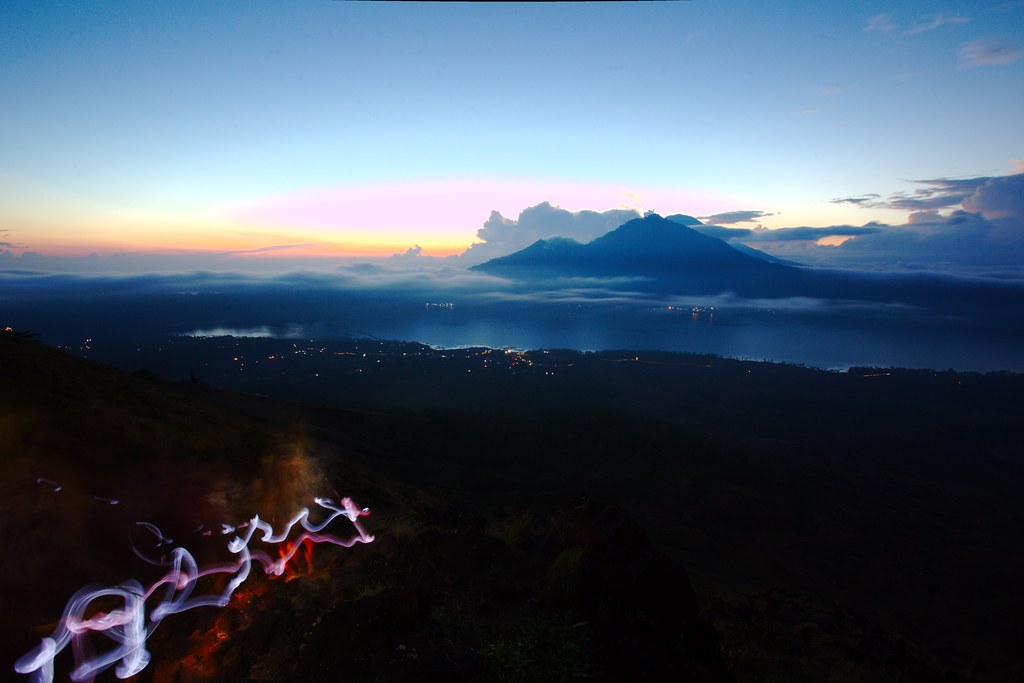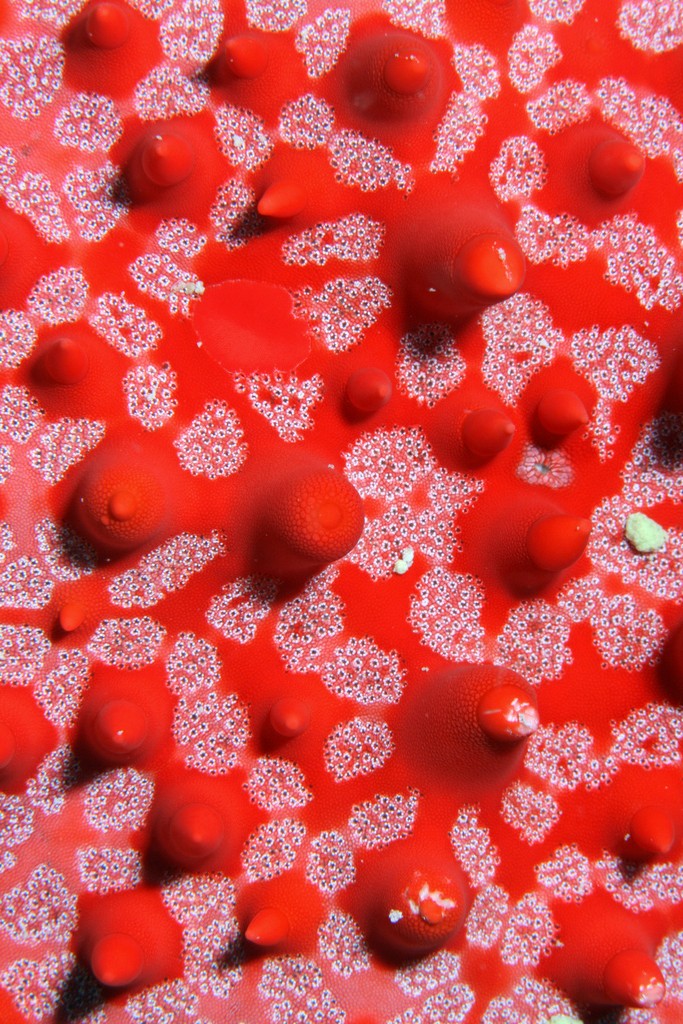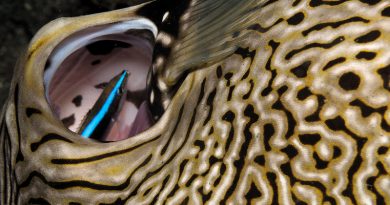Getting Started with Underwater Photography – Part 3 Strobes
First, I let you in on the truth that without proper buoyancy there is no good underwater photographing. Then, in episode number two of this series I wrote about getting the right camera for your underwater photography adventures.
But with this camera and housing on your kitchen table, you don’t quite have everything you need yet. You need an external strobe, better and more powerful than the one built into your camera. Why?
Reason one is that water is not a good medium to take pictures in. It absorbs light. The ideal environment for photography is outer space. There is very little matter there, and light can travel unimpeded. The visibility is many billion kilometers. Astronomers can take good pictures of galaxies so far away that I have to stop typing and take a minute to contemplate the extent of The Universe when I just think about these distances.
… (me contemplating)

Having a gas, like air, between the object of your photographic desires and your lens is second best. On a clear day on top of a volcano, the visibility can still be a few hundred kilometers. The more humid, dusty and smoky the air is, the more the visibility suffers.

But a liquid in-between lens and object is the worst! The increased density of matter – more molecules per volume – eats up so much more light. This light gets absorbed in a specific manner, so that less of the red tones survive the longer light travels through water. Hence, the deeper you go your shots will increasingly look dull and blue without the help of an external strobe. Colorful reef fish will be pale versions of themselves, red nudibranchs will seem gray and boring. Only your best Facebook friends will like these pictures (hey, like my book if you haven’t already done so!). You need to bring your own light source.
Why do you need an external strobe, as opposed to the one built into your camera? There are two reasons: One, it will be more powerful. Two, you will be able to move it around, and it will be further away from the camera’s lens, which reduces backscatter.

So, you’ll need a strobe! There are two options I can recommend: either get a nice affordable strobe, or get a high-end strobe which you will be able to use with your possible future high-end camera setup. The thing about strobes is that they are a truly modular part of your underwater photo gear. If you upgrade your camera, you will also need a new housing. But with this new setup you will most likely be able to use the same strobe you already have. Hence, purchasing a top-end strobe for your initial setup is an investment that will not go to waste should you chose to buy a mightier imaging system later on.
The INTOVA ISTR ISS 2000 is an affordable strobe which you can connect to your camera via a fiber-optic cable. The camera’s internal strobe then triggers this model. I used a similar model early in my underwater photography life, and adding this strobe was one of the biggest steps up in image quality I experienced.
I am currently using the Inon Z-240, the top model from Japanese manufacturer Inon. It is compact, recharges quickly between flashes and packs a mighty punch.
Packing a punch: this is quantified by the guide number of a strobe. The guide number = distance x f-stop. Taking a photograph 2 meters away at f10 will give the correct exposure with a strobe with a guide number of 20 (2 x 10). Hence, the larger the guide number, the stronger the strobe. The Inon Z-240 has a guide number of 24 (in air), reduced to 21 with the diffuser. Such a diffuser, a milky piece of plastic, is necessary to spread out the light more evenly.
The Inon Z-240 has a few more goodies: it has a focus light to make life easier for your camera’s autofocus under low-light conditions and at night, and it can be operated in a variety of settings, such as manual power control and TTL (automatic matching of the strobe power to the camera’s exposure setting). I also like that it works with 4 AA batteries, and not a hard-to-get generic akku. A nice strobe!
You will also need strobe arms to mount your strobes onto your camera. There are two options here: On are the arms built from connected plastic-balls, which can be twisted and bent at will. Such a system works well for shorter arms, and offers lots of degrees of freedom. For longer arms, when you really want to move your strobes out for wide-angel shots, straight metal arms connected with clamps are preferable – this is the more stable type of arm system usually used with high-end underwater camera setups.
Again, make up your mind according to your wallet and underwater-photographic ambition what you’d like to get, wait for you order to arrive, and then read next week’s blog entry in putting the right camera and strobe together in the right way.
